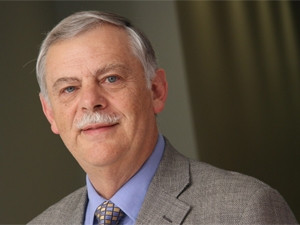
The traditional blackboard was first used in 1801. At the time it was high technology.
To still be using this teaching equipment in situations where students have smartphones in their pockets and tablets in their backpacks is unrealistic. This is the word from Kobus van Wyk, the head of e-learning initiatives at Mustek.
"They are tech savvy but we expect them to learn in an environment that dates back to 1801. Can you blame them for being bored out of their minds?" says Van Wyk. "Education is one of the most conservative professions on this earth."
According to Van Wyk, there is still so much scope for new technology in the education sector. If there are 15 million children in schools and there is one piece of equipment for every 10 children, that is a huge amount of technology that needs to be rolled out.
Describing himself as an e-learning activist and evangelist, he outlines that there are two aspects of e-learning. The first being how new technology can make the teacher a better educator, which makes the subject matter more interesting. There are also interactive learning tools that the children have in their own hands and can use to learn for themselves.
"A combination of these two aspects is ideal," he says. "Improving the quality of teachers is important. If you can put the right tools in the teachers' hands, it changes the atmosphere and makes things conducive to learning. While I don't believe that technology is a silver bullet that will solve all the problems, it can make a big difference." Van Wyk also highlights maths and science as key problem areas in SA.
He cites unused equipment as one of the biggest scourges of technology use in SA. "Sometimes the technology breaks down and no one can fix it. Sometimes it is a software issue. But most often, the teachers aren't properly trained to use the technology as part of their lessons," says Van Wyk, continuing that it is not so much about not knowing how to use the technology, but rather how to use it as a teaching tool.
Talking more broadly about e-learning in Africa, he discusses how the government of Rwanda decided to invest in its people by investing heavily in education and making their schools technology rich, adding that SA is lagging behind in many areas.
Khanya Technology project
In 2001, the Khanya Technology in Education Project was rolled out in the Western Cape to explore how information, communication and audio-visual technologies could improve curriculum delivery in schools.
"The idea was not for the kids to learn about technology but rather for technology to be used to teach the kids, particularly in subjects like maths and science," says Van Wyk, who was hired to run the project. He outlines that the project saw over 50 000 pieces of equipment being rolled out in 1 400 schools, with over 27 000 teachers being trained to use the new technology. The project ran for 10 years before being handed over to the provincial department of education, he says.
"There are small pockets of these technology initiatives around the country, but this is mainly in affluent schools," he notes, adding that the private sector can make a significant difference in areas with limited capital and resources.
When thinking about implementing this technology, he advises that schools look at exactly what they need and then choose the technology accordingly. What suits one school, doesn't necessarily suit another, he concludes.
Share